Exotic Animals Delight Downieville Students at Wild Things Assembly
October 20, 2025
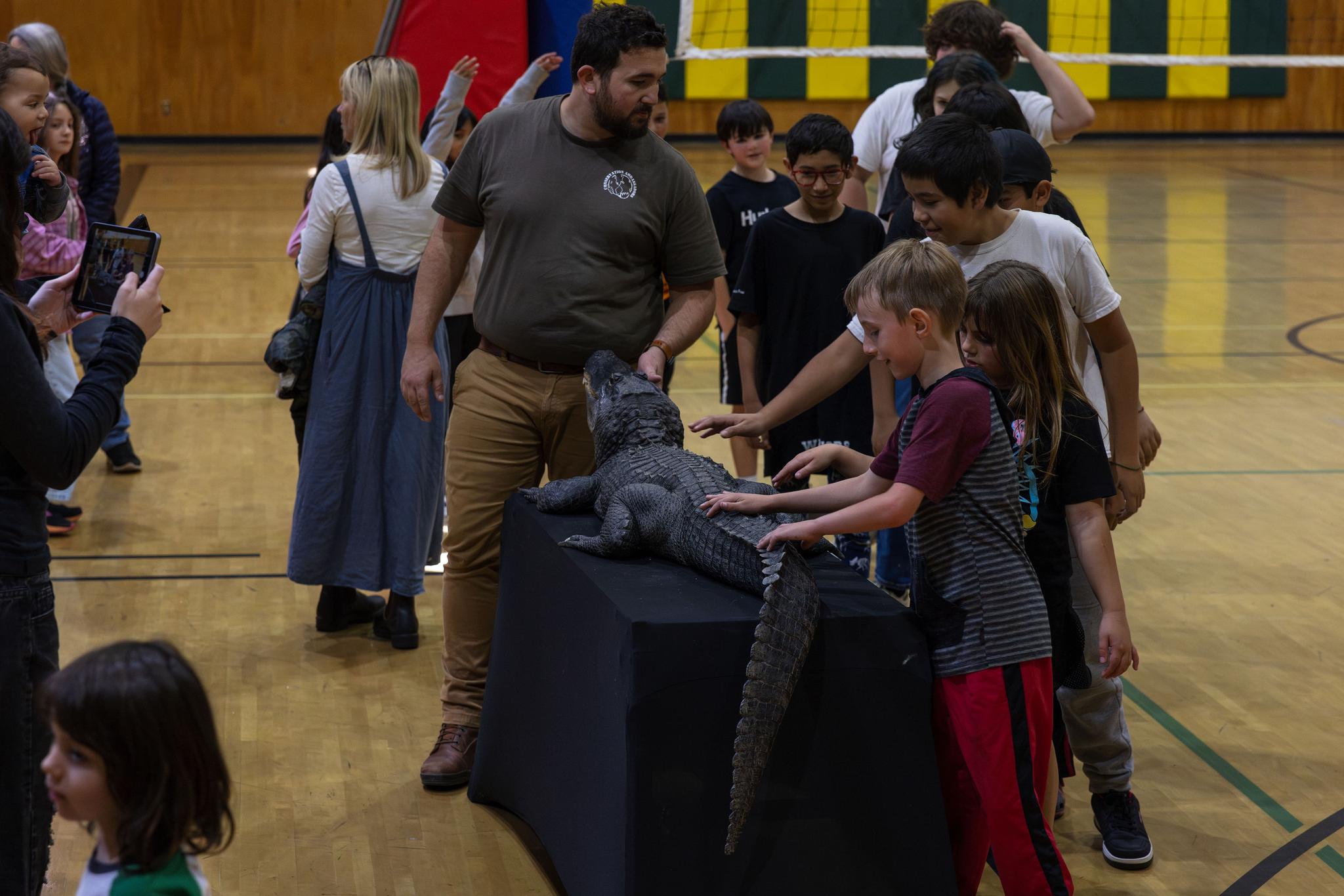
Students pet an alligator at Monday’s Wild Things assembly.
DOWNIEVILLE — Today, the Downieville School held an assembly with the help of Conservation Ambassadors’ Wild Things program, aiming to educate children about animals and conservation efforts. The program has been coming to Downieville for around 20 years, allowing students to see live exotic animals close-up and learn about their features, habits, and care. During the assembly, presenter Jojo Kerschner showcased five unique animals in an engaging and interactive format.
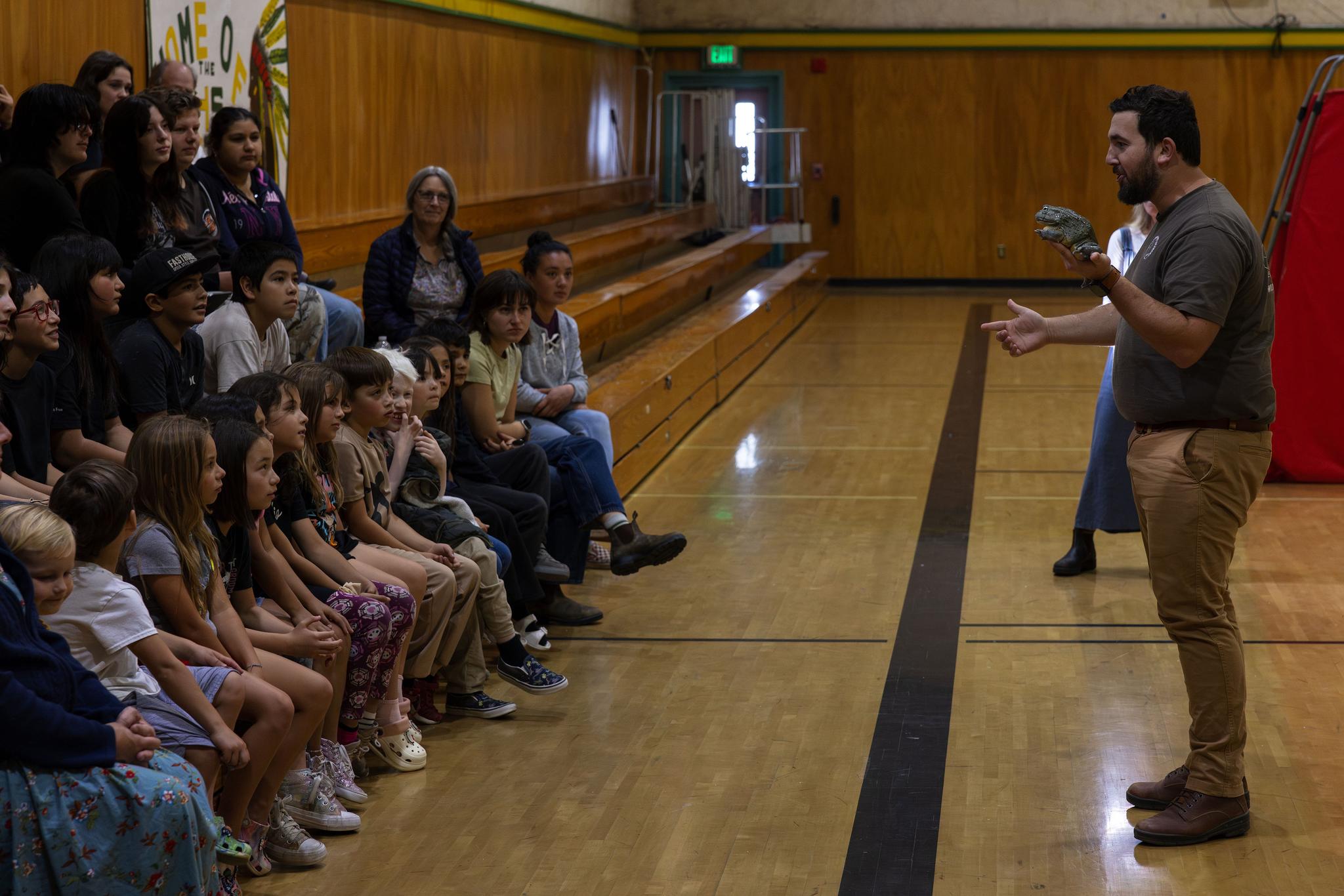
Jojo Kerschner displays an African bullfrog.
Kerschner first displayed an African bullfrog named “Dewey Hop,” which had been smuggled into the United States before being discovered in luggage and saved by a reptile veterinarian in Los Angeles. Kerschner explained, to the amusement of the students, that, during the dry season in the African savanna, the frog “basically coats himself in a big, white, snot bubble” to decrease its rate of water loss.
Kerschner next brought out a North American alligator named “Spike,” six and a half feet in length and 110 pounds in weight. More than 30 years ago, Spike was found being kept in someone’s bathtub in Los Angeles, and he is now the longest-tenured member of the Wild Things program. Kerschner explained that the alligator is “perfectly set up for life in the southern swamps,” where it would use its snout as a snorkel while looking like a log to potential prey. The alligator’s jaws have about 2,000 pounds per square inch of crushing power, with large teeth which Kerschner was able to display by opening Spike’s mouth.
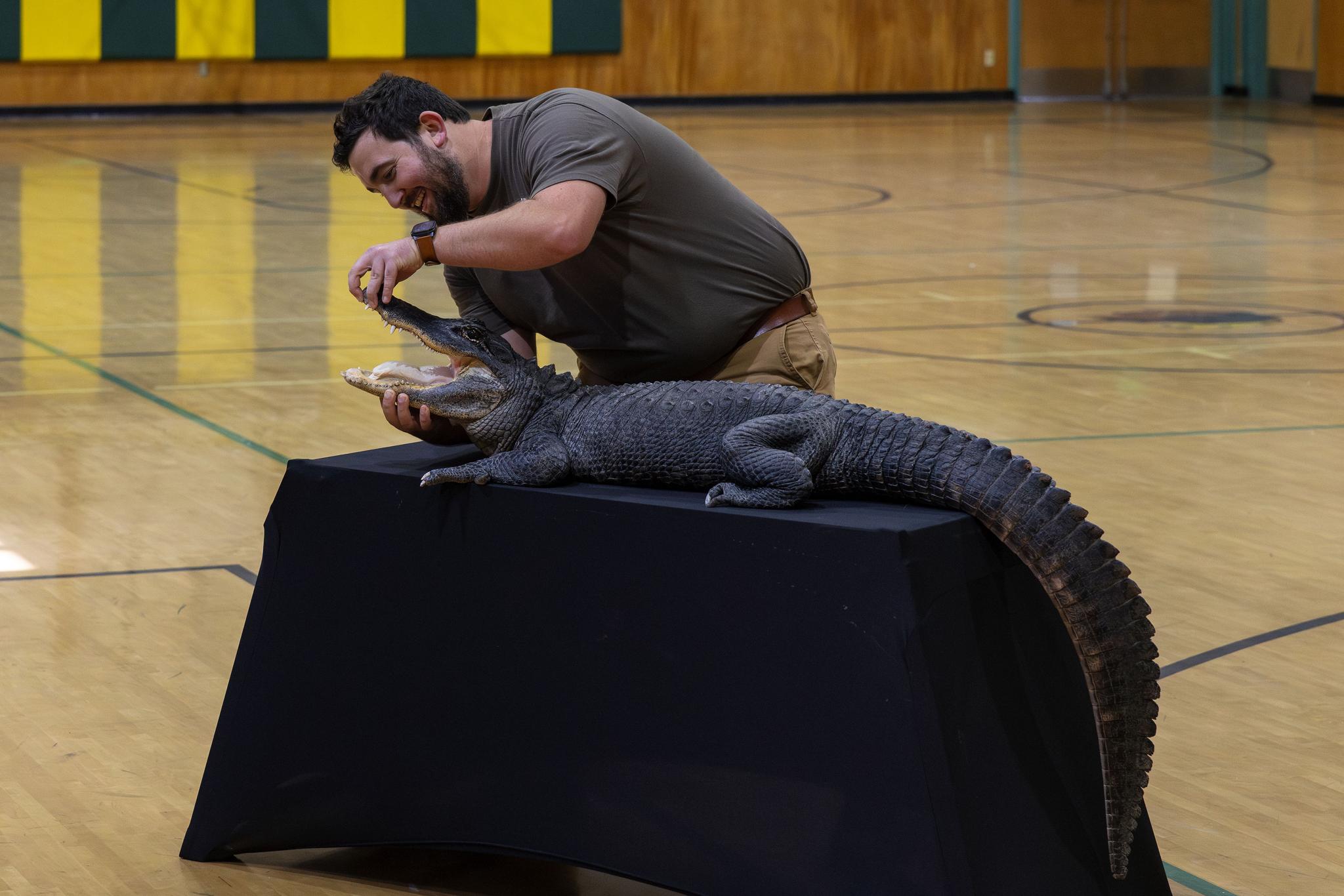
Kerschner displays Spike the alligator’s set of teeth.
Kerschner also described alligator conservation efforts, noting that the species had almost been hunted to extinction before it was designated endangered in 1967 and protections were put in place. Since then, the population has rebounded to the point where it is now designated a least-concern species by the International Union for Conservation of Nature. Spike was remarkably docile during the presentation, and students were able to line up and feel his rough hide.
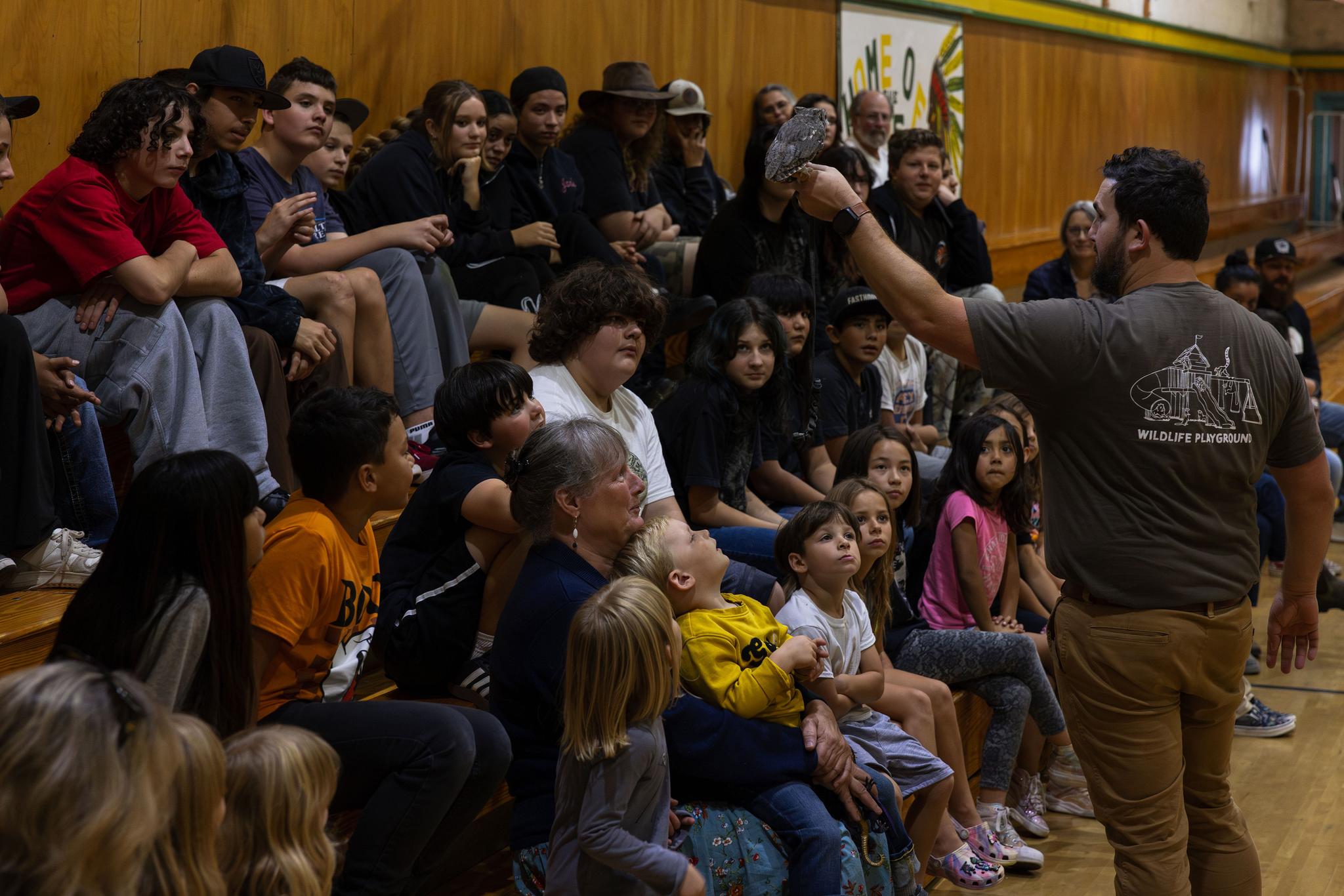
Students get a close-up view of Boo the western screech owl.
Following the alligator, Kerschner introduced “Boo,” a western screech owl. Kerschner explained that, despite its small size, Boo would use his exceptional eyesight and disproportionately strong claws and beak to prey on small animals like mice and insects. However, Boo had been hit by a car, likely causing him to lose his depth perception and taking away his ability to hunt for himself.
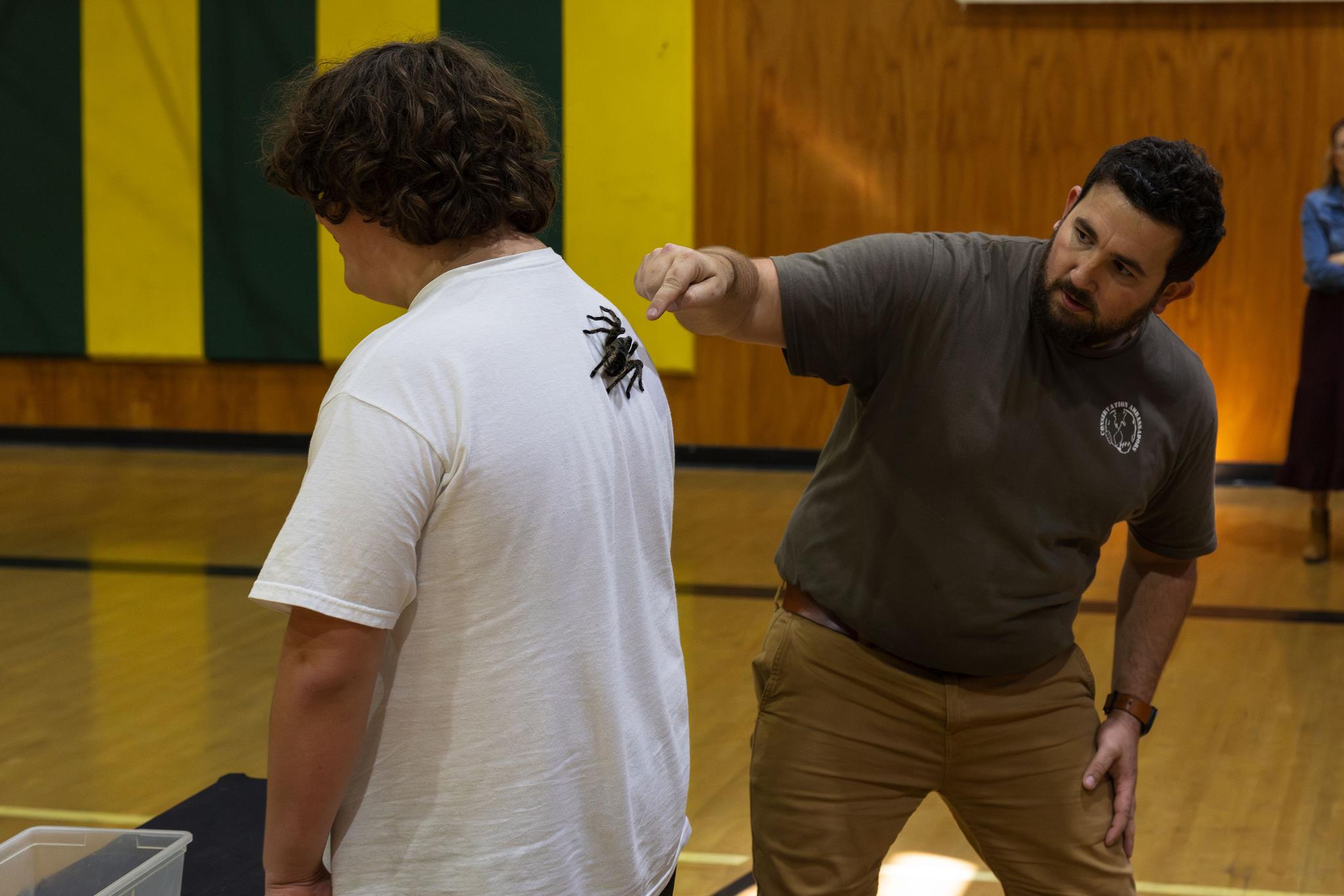
A student bravely displays Rosie the rose-haired tarantula on his back while Kerschner counts its legs.
In another example of audience participation, Kerschner had a student serve as the display for “Rosie,” the rose-haired tarantula, by allowing it to crawl on the back of the student’s shirt. While spiders are known for having eight legs, Kerschner pointed out that Rosie had two more appendages which, while looking like more legs, acted as its arms. Rosie had been the pet of a student who had gone to college and whose mother couldn’t care for the animal at home due to arachnophobia. When the student learned that his pet was teaching students about spiders, he decided to leave it with the Wild Things program even after returning from school.
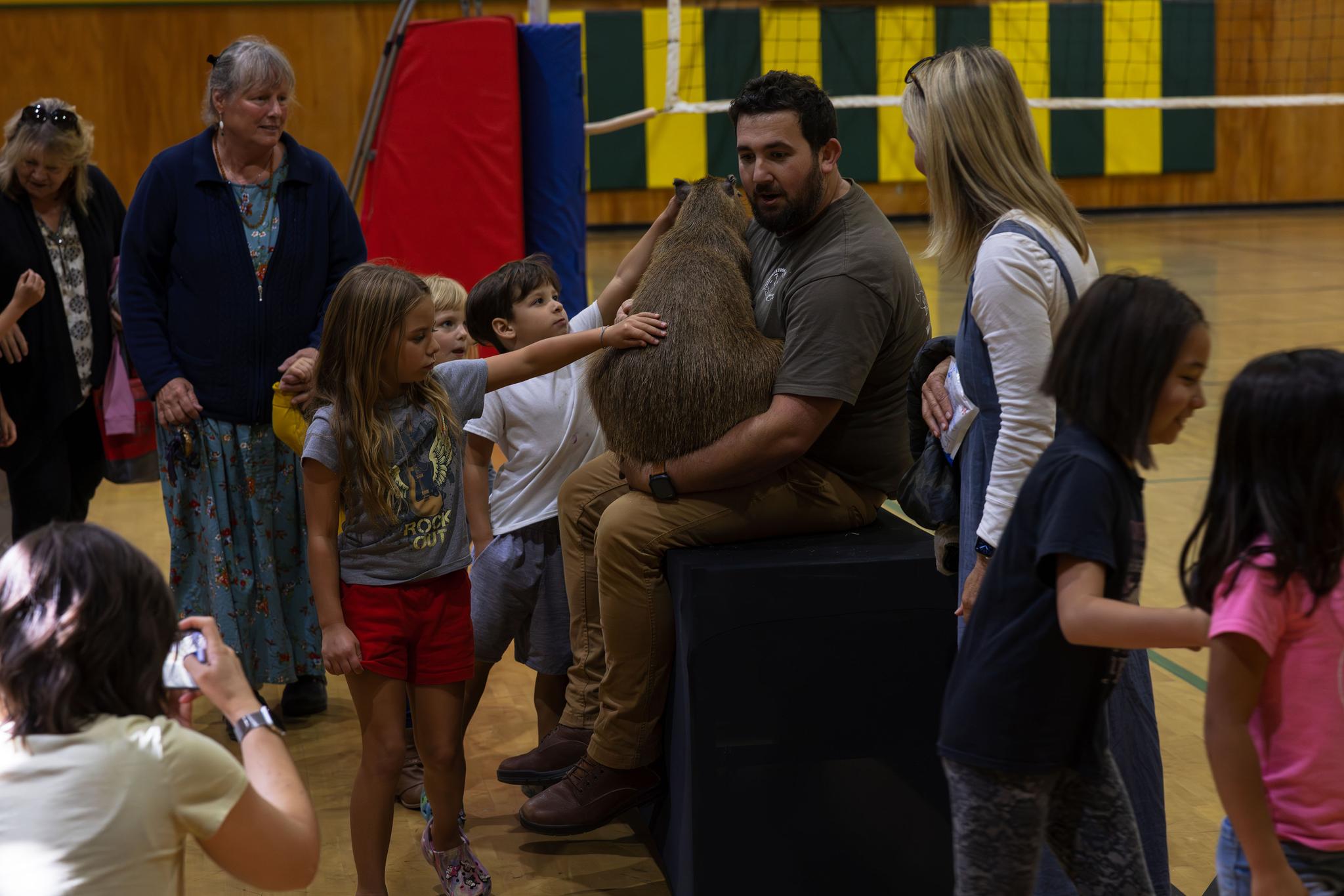
A student pets Tater Tot at the end of the Wild Things assembly.
The Wild Things finale featured “Tater Tot,” the capybara. Tater had been displayed at last year’s assembly but had grown considerably since then. Kerschner explained that capybaras, members of the rodent family, are ready to survive at just a day old, already able to walk and run. They start eating solid foods at four days old, at which point they begin to grow rapidly. While Tater was already 80 pounds at the assembly, Kerschner expects she will grow to around 100 pounds.
Tater’s mother came from a breeding program in Arizona whose owner died unexpectedly. The mother gave birth to a litter of capybaras, with Tater among them. However, the mother refused to care for Tater, so Kershner became Tater’s mom. “I’d give her a bottle every two to three hours, day and night. I had to make sure she was getting all the right foods. She’s since become best friends with my little Dachshund,” he explained.
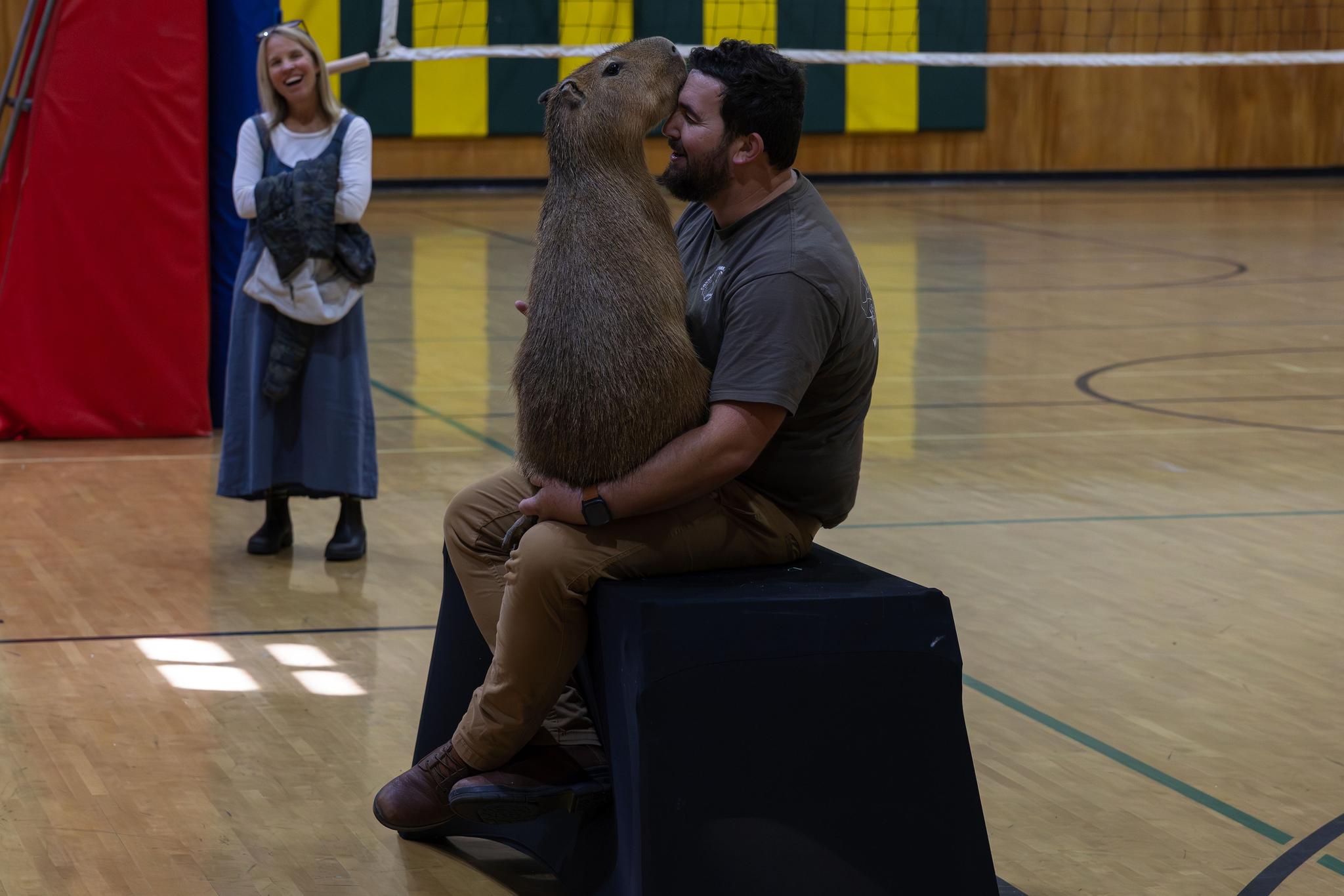
Tater Tot was very affectionate toward her “mother.”
Kershner concluded the assembly with a message to keep the environment clean by picking up trash and recycling. He added that students can make a difference by acting on things about which they are passionate, saying, “If there’s anything that you guys care about, whether it’s people, plants, animals, or the planet itself, get up there and do something about it… We can make this world an even more amazing place to live.”
Featured Articles
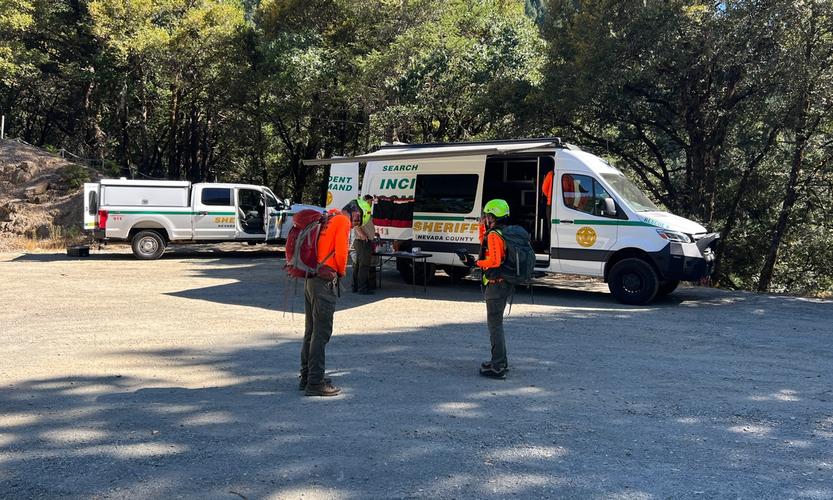
Sheriff’s Office Accepts $60,000 Grant for New Search and Rescue Team →
December 2, 2025
Sierra County to enhance emergency response with grant-funded search and rescue team initiative.
Confusion Surrounds Release of the Plumas County Grand Jury’s Report →
December 4, 2025
WCB Considers Grant for Sierra Valley Tribal Land Purchase →
Updated November 22, 2025
Downieville Fire Auxiliary Hosts Annual “Holiday on Main” Event Saturday →
December 2, 2025
Flood Forces Temporary Closure of Sierra Hardware →
December 3, 2025